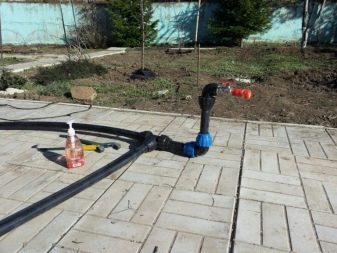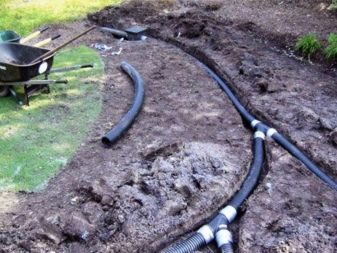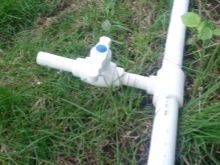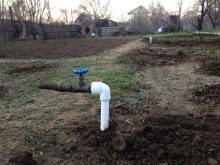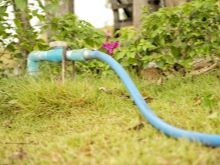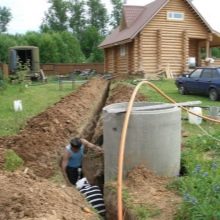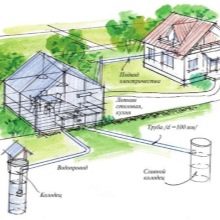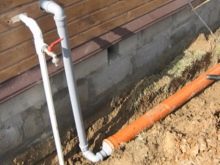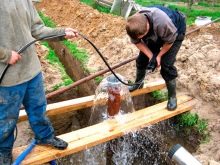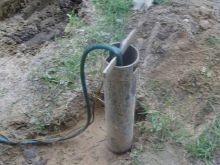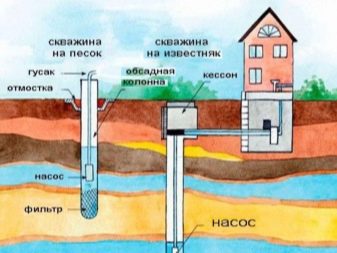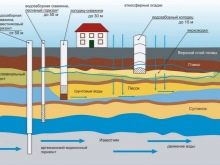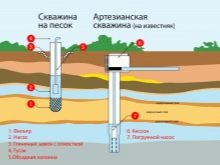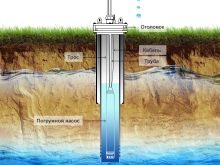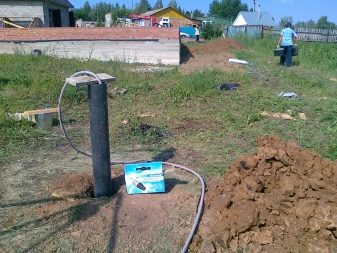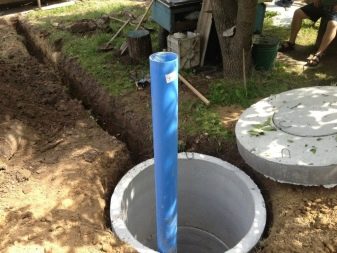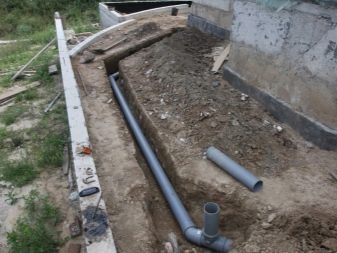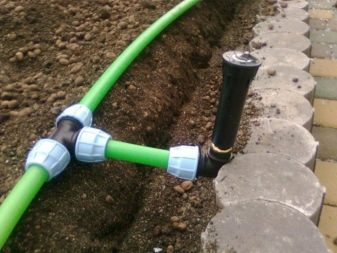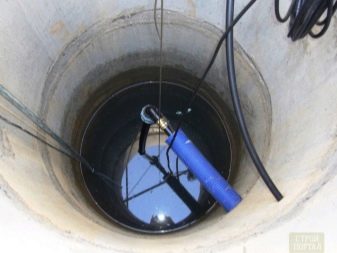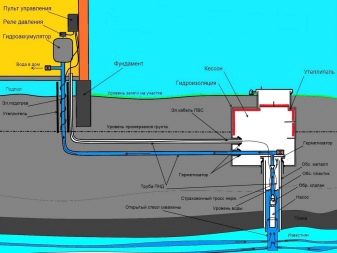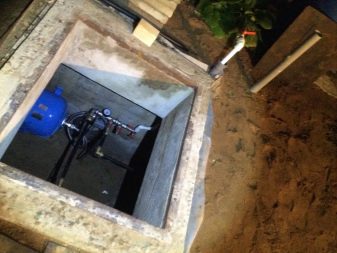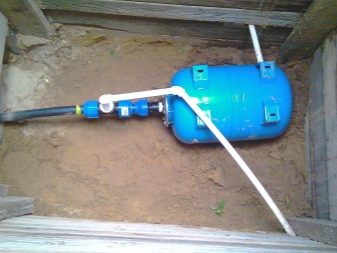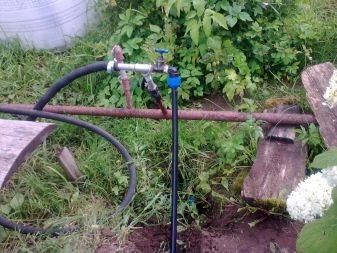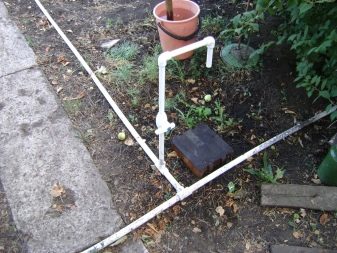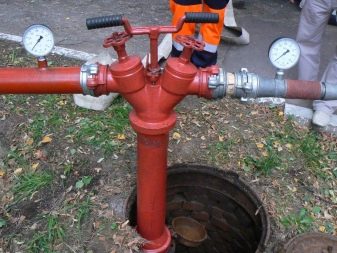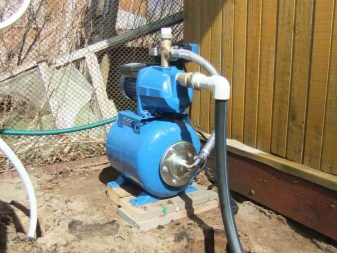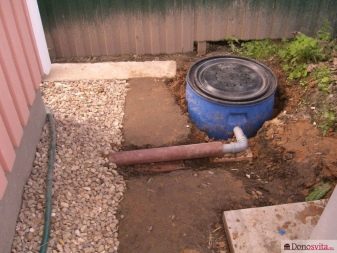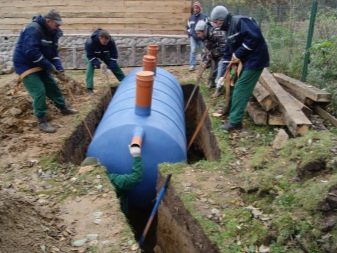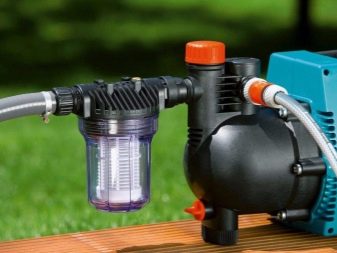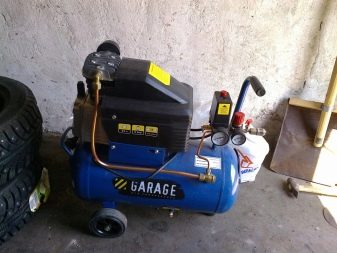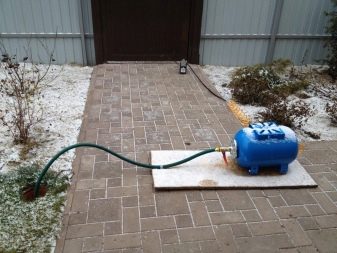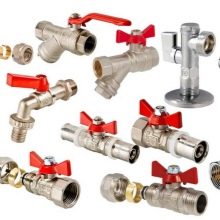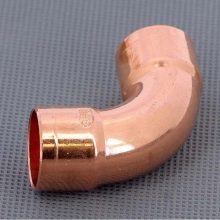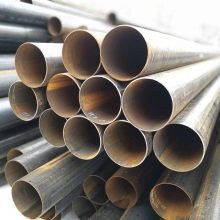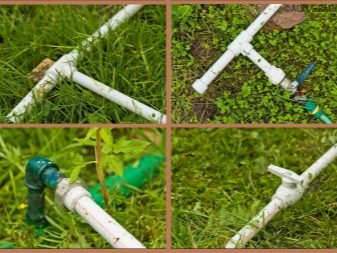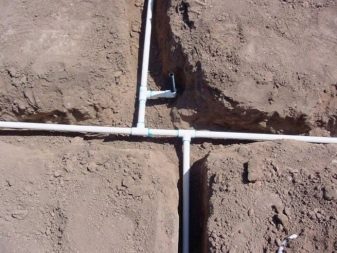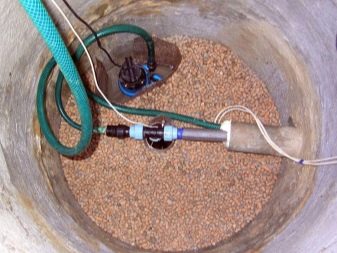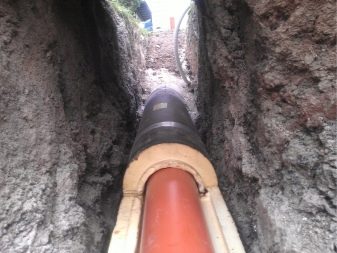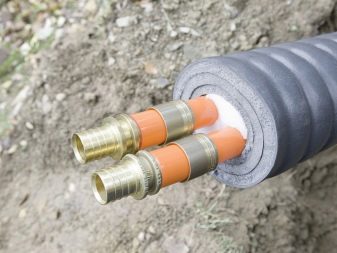Subtleties of the process of arranging water supply in the country
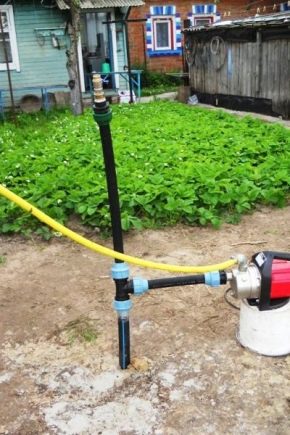
“Water is life,” the ancients said. And indeed it is. But in order that the dacha does not become a lifeless desert, you need to make some efforts to build and equip properly water supply.
Special features
The water supply system in the country should be powerful, because it supplies fluid not only for household and technical needs, but also for watering plants. This means that every day will have to spend several hundred liters of water. Even seemingly modest areas often use it in huge quantities, although this is imperceptible at first. But besides your own needs, you need to remember about the availability of technical conditions for connection. The list of these conditions and their severity are entirely determined by the decisions of local authorities and self-government.
For those who have not come across the design of documentation for a new water supply system before, it becomes a real revelation - how much needs to be done. What is important, without collecting the full package will not work and connect to the sewer. It is possible to understand the representatives of the authorities, the comfort of living people depends on the quality of water supply networks. And also the water supply system is a strategic object, therefore it should work more clearly than the Swiss watch. You need to be prepared that registration and approval will take several weeks.
Projects should include:
- how the sewer discharge will be carried out;
- how much water will be needed;
- Will the system work all year round?
- exactly how they organize the discharge of water and the suspension of its supply.
Kinds
It is necessary to deal with the SES, vodokanal, plans and schemes after the nuances of the water supply of a country house have been studied, and a suitable method of organizing it has been chosen. It is necessary to choose between three main types of sources:
- well;
- central water supply;
- artesian well.
Alas, the quality of water in open water bodies and in the upper soil horizons is very low.Sometimes it is simply dangerous to health in chemical and microbiological composition. It is recommended to focus on the experience of the owners of neighboring areas. If they ordered the drilling of wells, then this is the way to be considered first.
It makes sense to dig wells if the aquifer is 4-15 m from the surface. The fee should be paid only for materials, and all the work can be done by hand.
A well thought out well serves up to 50 years; even if the power is suddenly turned off, a simple bucket will allow you to get at least some water. With regard to the risk of falling into the mine, it is not so great. If everything is done correctly, proper sealing of all joints and places of pipe insertion is carried out, problems should not arise at all. A number of places are complex, and there they have to punch wells. It is important to distinguish between their two types: "on the sand" and artesian.
Drilling "on the sand" captures the upper levels of sandy horizons. It is there that the water closest to the surface is available for drinking. Laying on top of a high-density loam layer helps efficiently filter many contaminants. Due to differences in the geological structure of individual territories, a well “on the sand” may have a trunk of 10–50 m.The problem is that in many cases, after five years, the filters are inevitably clogged with silt and sand.
But here we have to rely on chance. If you are lucky, and the drill will lead into the underground river, the flow rate will be almost unlimited, and the risk of blockage of the canal with sand will become zero. It is recommended to work manually, because this method increases the chances of detecting a high-quality aquifer. Mechanized drills often skip past him, trying to go deeper. No wonder, because commercial drillers are paid not for meeting the interests of their clients, but for the meters they have passed. When there are no aquifers near the surface, it is necessary to drill an artesian well.
It takes water from the limestone layers, the depth of which varies from 35 to 1000 m, sometimes even more. But for domestic purposes it is extremely rare to drill wells over 135 m. Each such object is drilled with the permission of the authorities and is subject to official registration. At great depths, everything is considered federal property, and landowners are becoming ordinary users. No less important reason is the exceptional high cost and duration of the drilling of very deep passes.
Usually, in order to save money, artesian wells are ordered by the owners of several neighboring sites. Such a source is completely devoid of the risk of contact with the top layer. The term of uninterrupted work is very long, so the initial costs are fully justified. The parameters of artesian wells are calculated in advance, because the necessary equipment depends on their flow rate and other properties. The surface pump will cope well only with some shallow wells “on the sand” and with wells, otherwise a submersible device is needed.
In addition to the source of water and means of transfer, it is useful to take into account the type of pipes.
Many cottage owners prefer pipelines made of plastic material (PVC). Plastic is lightweight and relatively durable; with the right choice, it poses no danger to those using drinking water.
Important: despite the high resistance of polymer pipes to frost and sunlight, it is better not to lay them on the ground, but to bury them deep into.
It is categorically impossible to use metal-plastic pipelines with a hardening layer based on aluminum for country water supply.They are more expensive than simple polymer solutions and in the summer should be continuously filled, and in the winter they should be unconditionally empty.
Winter
Non-freezing plumbing in the country is needed even in the case when in the cold period of the year it will be visited only periodically. This kind of communication is even more relevant for country houses, where it is planned to settle for some time. The advantage of this solution is that you do not have to pour water from the pipes every time to prevent them from freezing and subsequent destruction. Laying the pipeline at a depth of 2 m is the most reliable way to protect against frost.
In the typical system, except for pipes, include:
- pump (submersible or surface version);
- drain valve;
- pressure measuring relay;
- hydraulic accumulator;
- cable for heating water.
Experts recommend to take pipes on the basis of polypropylene for the winter view of the water supply system.
They will last a long time and will not let through too much heat. The undoubted advantage will be solid acoustic insulation of such structures. Thermal welding is a reliable and modern way of connecting pipes, it guarantees perfect integrity and stability of their work.According to experts, the submersible pump is not only better protected, but also more economical than surface counterparts.
Pouring valve in the winter water supply is placed next to the pump. Drainage can be organized in any body of water or in the well. When the “cold” circuit is laid near the house, the pouring valve is often replaced by a bypass pipe. The pressure switch is important because it will provide a strictly defined range of pressures in the system. The hydraulic accumulator not only creates a reserve of liquid in case of a sudden shutdown, but also helps to avoid destructive shocks.
Summer
Depending on the type of pipes used, you can either leave them on the ground or lay them in ditches of shallow depth. Underground installation is laborious and long, but this scheme is more reliable than surface. Before installing the pipe, it is necessary to stretch and spread it out over the section in order to once again align all the nuances and subtleties. When the system is assembled, it is required to start the pump and check whether the joints are properly mounted.
Device
The scheme of the water supply network implies the necessity of taking into account such a parameter as water loss. After all, the summer water supply is responsible not only for the communal convenience of the residents, safety depends on it in case of fire.Normally, the connection of fire-fighting autopumps (2 pcs.) On neighboring hydrants is provided. To prevent the occurrence of vacuum helps tying pumps with hydrants due to soft sleeves. The hose lines laid in the project are calculated for a diameter of 6.6 cm.
Trunks with nozzles from 1.9 cm should be connected to them. The test for water loss is carried out in two modes: first try to supply water to the ridge of the highest structure, and then check what the head will be when pulling fire hoses along the ground.
It helps to increase water loss:
- sealing of pipe joints;
- timely elimination of all failures;
- ensuring the health of used pumps and pumping stations;
- timely repair of bypass lines;
- cleaning of pipelines from pollution and deposits of various nature.
Country water supply system, in addition to supplying water for domestic and technical needs, to deal with emergency situations, is obliged to ensure the normal operation of the sewage system or septic tank.
Important: cesspools are not only unsightly and create an unpleasant odor, they inevitably lead to microbial contamination of wells over time. Even the observance of all sanitary standards and distances only removes this moment, but cannot prevent it at all. When using septic tanks, it is necessary to provide a special plumbing circuit through which water will flow to rinse them as needed. It is not recommended to use in the cottages septic handicrafts, sooner or later it will be found out that they are not tight enough.
The supply of water for irrigation, not to mention the supply of drinking water to summer residents, requires strict compliance of the fluid with sanitary standards. Given the quality of water coming from most wells and even wells, this means the need to use filters. Drip irrigation is even more demanding on the cleanliness of the liquid than usual. The direction of installation of the filtering system in this case is not fundamental.
Homemade watering filters are not recommended. The cost of factory production is relatively small, while it has a very good cleaning area that cannot be achieved in products assembled at home. If you plan to organize a year-round water supply, you should buy a special compressor to blow it on the eve of winter.
Even frost-sensitive plastics are relatively easy to repair, provided they are as dry as the inside from the inside. The presence of even small amounts of water in combination with cold forms a practically explosive mixture capable of breaking even strong metals.
Purging is required not only for water supply, but also for:
- pumping equipment;
- pipes remaining in an unheated room;
- means of external automatic irrigation;
- feeding the outdoor pool piping;
- automated feeders and drinkers.
Drain opening the crane is unreliable and does not differ uniformity. Even a long wait and scrupulous calculation of the displacement of liquid does not allow us to be confident of success. It is a different matter if the circuit is blown through with compressed air, which confidently reaches the most remote corners and displaces even single drops of water. Of course, before blowing out, you should disconnect all heating and plumbing equipment, remove any plugs and open the valves at full capacity. If it is known that there are blockages in the pipes and circuit, they should be removed before connecting the compressor.
It is necessary to disconnect the device after all the conclusions will go only air without the slightest trace of liquid water.
How to do?
Do-it-yourself installation of the suburban water pipeline can be done by any more or less literate person. The necessary scheme is thought out simultaneously with the project of the house as a whole. Formed a detailed estimate, which is used to purchase equipment and materials, consumable items.
It is recommended to allocate a small corner on the first floor for the placement of boilers, water meters and other infrastructure. Square 2-3 square. m for him enough in abundance.
It is not necessary to buy metal pipes, highways made of metal or polypropylene manifest themselves no worse. Before digging a trench, a thorough marking of the future route is made. When measuring, in addition to roulette, you should use stakes and twine.
It is worthwhile during the design to determine the need for:
- pipes;
- corners;
- valves and cranes used daily;
- fittings and other fittings.
The simplest summer water supply system (collapsible) is mounted from rubber or silicone pipes connected by adapters. Buy the necessary components easily at any hardware store. To connect pipes, it is recommended to choose products from galvanized steel.Their high cost compared to the plastic versions is fully justified by improved practical properties.
It should not be for a permanent plumbing to dig a very deep trench, it does not justify itself.
For your information: each pipe should go with a bias towards the connection to the supply line. At the input is mounted drain valve. Electric cables, power pumps and other volatile infrastructure are allowed by the rules of the device to put in a common casing with pipes. In order to carry out the insulation according to the rules, it is necessary not only to remove 0.6-1 m of soil, but also to fill up the insulation material by 30 cm. As a heater, claydite and crumb foam are most often chosen.
A pit is being prepared near the well; it is a square with a side of 700 and a depth of 1000 mm. It is recommended to put the pump there, laying out the walls of sturdy boards, bricks or concrete rings. The wood is supposed to be treated in advance with antiseptics. The bottom of the excavation is poured with concrete or at least covered with gravel.
Regardless of the arrangement of the summer or winter water supply, any detail of it must be done in such a way as to succeed in eliminating defects without total dismantling.
Verification of the internal fire tank and the communications connected with it is obligatory, even if a successful solution that has proven itself in practice has been chosen. This hydrant can not be equipped everywhere, a lot depends on the pressure. If it is insufficient, it is better to put a large capacity, 15-25 cu. The water accumulated in the reservoir will be a real help for the rescuers arriving at the call.
Important: for the all-season fire pipeline it is required to equip the circuit with an internal heating cable.
To equip a warm pipeline, you need to take into account a few more nuances. Basalt wool, glass wool and polystyrene foam are often used as insulants. Glass wool is recommended mainly for channels made of metal. Be sure to cover it outside with other materials. Basalt wool assembled into cylinders is mounted very easily and mechanically strong. The protective properties of the material fully justify its high price.
Tips and tricks
To fill the toilet seals and septic tanks for the winter, it is recommended to use not a solid antifreeze, but a strong solution of table salt.It is much safer and performs its function just as reliably. When laying the main pipeline, its penetration under the freezing line is done by 0.2-0.25 m. Above it is unsafe, and excessive penetration will only bring unjustified expenses. Even if the suburban water supply will be created only for watering a small garden, you still need to prepare full-fledged drawings, so it is much easier to take into account the nuances and prevent mistakes.
To learn how to make an underground water supply in the country or on the plot, see the video below.
